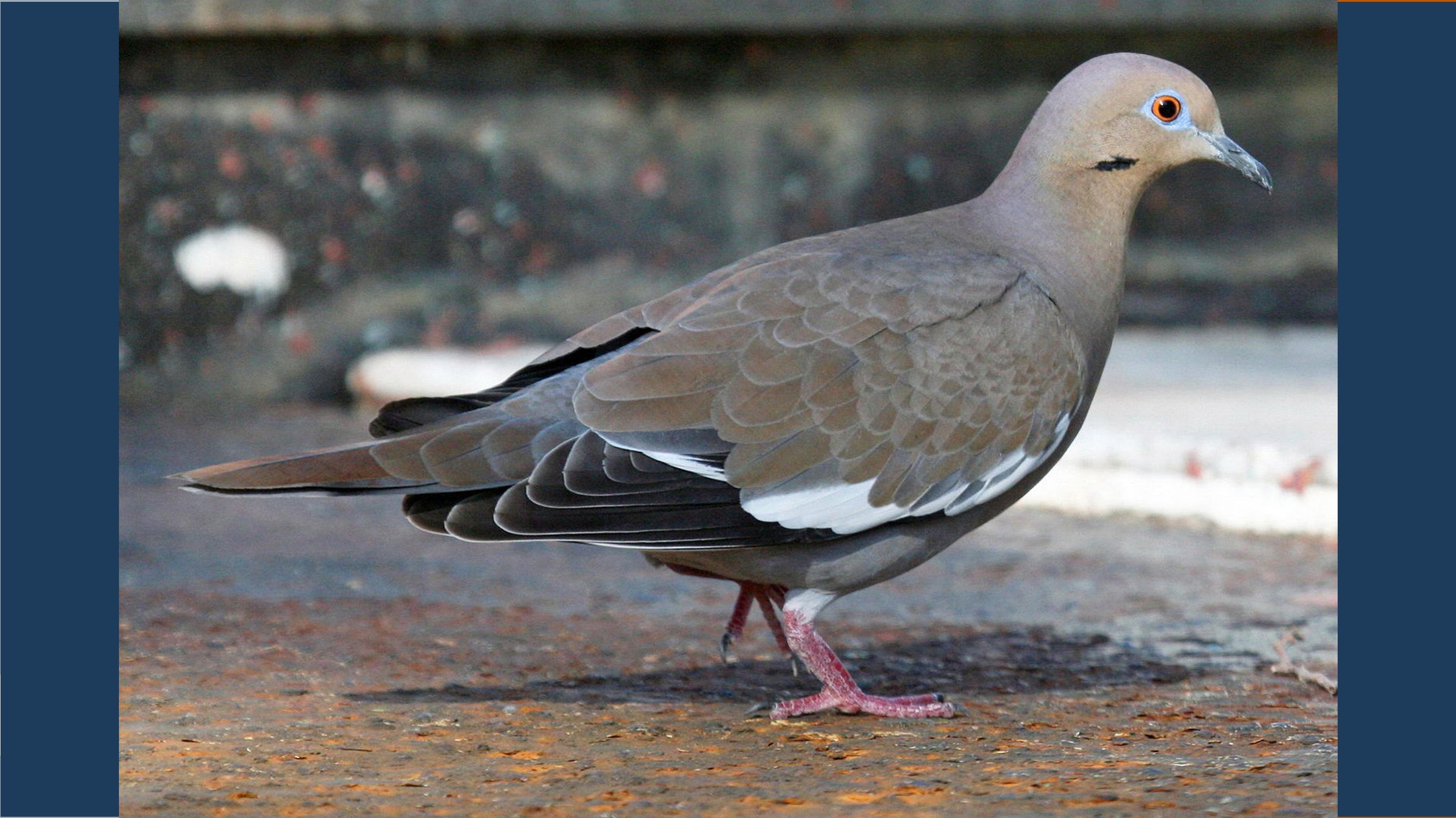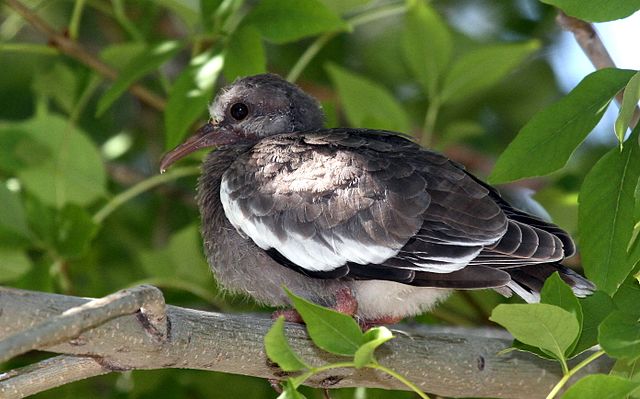
Photo: Dick Daniels (http://carolinabirds.org/)
If you step outside, you can probably hear this bird in a nearby tree, cooing softly. Or you might see it foraging on the ground, its head bobbing back and forth on its plump beige body.
This is the white-winged dove (Zenaida asiatica). Its name tells you how to tell it apart from other doves in Central Texas, like the mourning dove (Zenaida macroura) for which it is commonly mistaken. The upper surface of the wing has white feathers. The white-winged dove is bigger than the mourning dove, and its tail is more bluntly rounded. It has a pale blue ring around its eyes. Adults have crimson eyes and juveniles have brown ones. The males and females look almost identical.
The native range of this bird extends from the southwestern United States, through Mexico and Central America, into parts of western South America and some Caribbean islands. It also is in Florida. Some populations of the bird are migratory, but here in Texas we do have year-round populations. Climate change is expected to see this bird’s range expand further north.
These birds are granivorous, which means they eat mostly seed, but some fruits and berries as well. If there are large flowers around, it will drink the nectar. In Texas, some have observed the white-winged dove practice “collaborative feeding,” where the birds were shaking seeds from a Chinese tallow tree so other doves could eat.
During the mating season, the male will perform a courtship display for the female. He will flap up, then glide down in a wide circle. He also flashes his black and white tail pattern. After a successful mating, he will bring the materials for the nest and the female will build it. Both parents share in incubation responsibilities, in addition to sharing “pigeon milk” to the young. Pigeon milk is a secretion from the lining of the crop (section of the lower esophagus) in the parent bird. It is regurgitated to young birds and is highly nutritious. It has many antioxidants and immunity boosters.
The clutch size is usually two eggs, but sometimes there are four. The young will leave the nest in about two weeks time after the two-week incubation period. Here in Texas these birds will nest into late August.
The white-winged dove is a game bird, and has been important for Texas hunters since the early 1930s. Currently, Texas is the state that has the largest hunting catch of this bird.

Juvenile. (Photo: Greg Schechter)
Due to changes in irrigation practices and agricultural expansion in Texas through the 20th century, as well as periods of overhunting, this bird has seen fluctuations in its population. Within the last 20 years, nesting populations have spread more widely in Texas and into other states. This spread began in the 1980s as citrus groves suffered killing freezes. Citrus trees had been nesting areas for the dove, so with the loss of many of these nesting trees, the bird was forced to find new sites. However, the white-winged dove has proven to be very adaptable and is currently regarded as a species of “least concern” according to the International Union for the Conservation of Nature
EVEN ROCK STARS LOVE THEM…

The blog title probably made some readers immediately hear musician Stevie Nicks singing away in the song, “Edge of Seventeen.” The chorus goes: Just like the white-winged dove, sings a song, sounds like she’s singing... This was a big song in the 1980s, but don’t forget another big 1980s song about doves. The Artist Formerly Known as Prince’s “When Doves Cry.” Whether the Purple One was singing about Zenaida asiatica or some other dove species will forever remain a mystery, but what we do know is that doves don’t actually weep. In his article “How Well Do Rock Stars Know Their Birds,” Nicholas Lund humorously writes about Prince and other rock stars taking artistic liberties when it comes to bird biology.




